TOKYO - I arrive at the entrance of the HOSHINOYA Tokyo, the capital’s newest hotel, on the eve of Bunka no Hi (Culture Day), when the nation celebrates its deeply rooted customs and traditions.
As I step out of the cab, I feel like I’ve arrived at the cultural crossroads of Japan. On one side of the street I see the Imperial Palace grounds, the venerable home to Japan’s revered Emperor and his family; on the other side stands the gleaming glass and steel office towers that make up Tokyo’s prestigious Otemachi business district.
HOSHINOYA Tokyo appears perfectly juxtaposed. That’s because this amazing property, whose concept is based on preserving Japan’s threatened ryokan culture (traditional inns that date back centuries that are normally built near onsen hot springs) is located in one of Tokyo’s newest buildings.
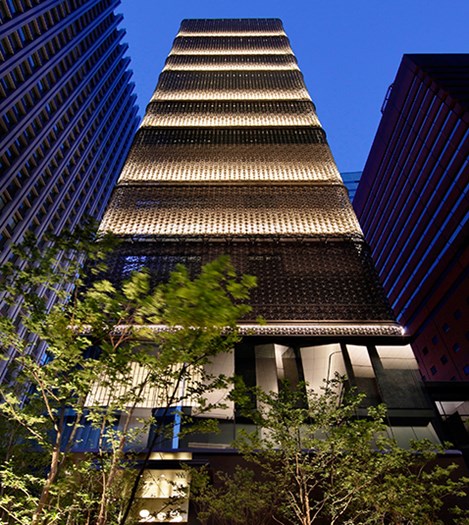
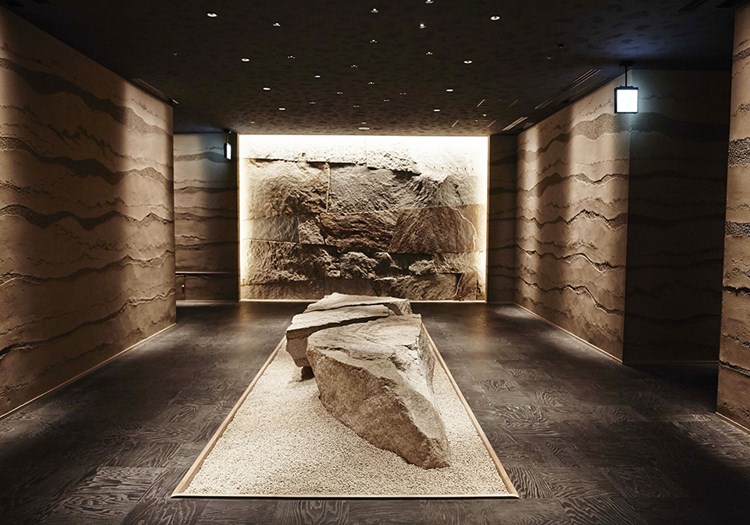
Left: The hotel occupies prime space in Tokyo's business district. Right: Entrance to the hotel's famed restaurant.
A young man wearing an haori jacket welcomes me to the hotel’s genkan — a traditional entrance where shoes are normally removed. I’m instantly impressed with the arrangement of seasonal flowers, sliding paper screens and aromatic Japanese wood featured at the entrance.
“We’ve been expecting you,” says the attendant as he leads me to an elevator with the tatami flooring. A few seconds later we step off on the ninth floor of the 17-storey property and a young woman manning the ochanoma (lounge) — each floor has one — bows and welcomes me again.
“Please follow me,” says Tomoko as she leads me down a dimly-lit hallway to the entrance of my room — there are just six guest rooms on each floor of HOSHINOYA Tokyo, the city’s only 5-star ryokan which is operated by Japan’s famed Hoshino Resort Co.
As I cross the threshold, I feel like I’m being transported back to ancient Japan.
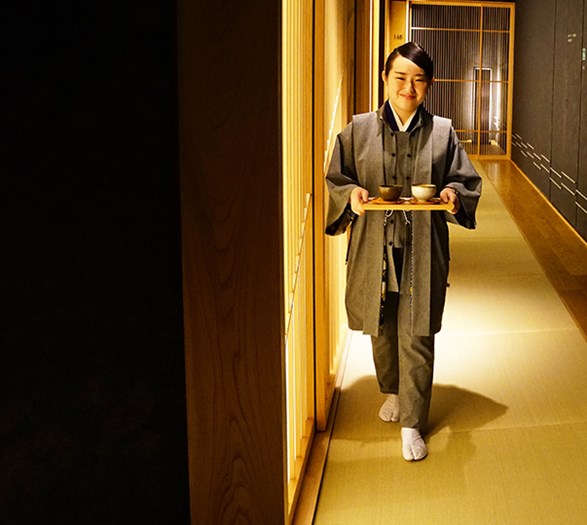
Above: It's service with a smile at all HOSHINOYA properties.
A glorious light streaming through some shoji screens highlights the room’s traditional trappings — futon beds raised on a platform anchor one end of the L-shaped suite, which is wrapped in lots of warm blonde wood and bamboo. The room, whose checkerboard-designed tatami ceiling mirrors the flooring perfectly, also includes a dining table and a cozy low back sofa with lots of pillows. The room’s furnishings were custom-crafted by the renowned Hinoki-Kogei woodwork factory and the room’s lanterns were designed by the legendary Masanobu Takeishi. Walls are painted in colourfully-rich adzuki-bean purples or matcha-tea greens. Very pleasing to the eye. Tomoko is anxious to show me the bathroom, the highlight of Hoshino’s 5-star HOSHINOYA properties — the company operates similar award-winning resorts in Kyoto, Karuizawa, Okinawa and Bali.
The spacious bathroom comes complete with a wooden bucket and stool for those who prefer to bathe in the traditional Japanese style. However, the bathroom area also includes a state of the art shower, a stylish square bathtub and a self-cleaning toilet that look like they were designed by NASA. The posh toiletries, specifically made for HOSHINOYA Tokyo, are fit for the Emperor’s wife.
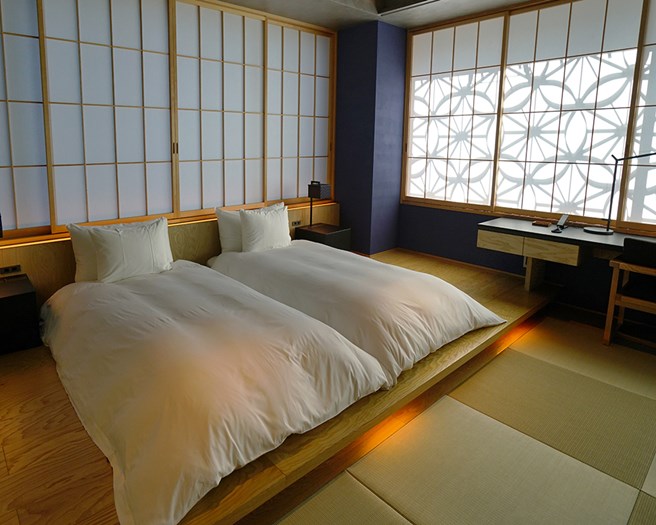
Above: The hotel offers traditional trappings in a modern setting.
Tomoko tells me each room is overloaded with modern technology — high speed internet, etc. — but she reluctantly introduces me to the television, which is hidden behind a black mirrored wall.
“We like our guests to live a traditional Japanese lifestyle without any modern interruptions while staying at HOSHINOYA Tokyo — but the TV is here if you feel a need to watch,” she says in a soft voice.
The young attendant then pulls out a drawer filled with traditional Japanese garb.
“We encourage guests to wear these kimonos (for dinner and elsewhere in the hotel) and pyjamas (modern cotton jersey outfits) when they are walking around their floor so they can have the complete ryokan experience,” Tomoko tells me.
The room is also bathed in a magical kimono motif effect, which is created by the light filtering through the stylish black metal lattice work which wraps around the HOSHINOYA Tokyo tower.
“Every kimono has a hidden interior design and the architect (Rie Azuma) used the Edo Komon pattern on the exterior of the building because it is considered good fortune. It also means ‘four directions’, so it welcomes guests from everywhere,” Tomoko informs.
After freshening up and changing into my comfortable lounging pyjama outfit, I join Tomoko in the ochanoma where she prepares me a cup of seasonal tea and treats me to some nigiri rice balls. The lounge also serves sake and Japanese wines (surprisingly good!) in the evenings and was created by Azuma to encourage guests to mingle. It’s also a place where staff like Tomoko and front desk manager Asuka Nagayama, who lived in Vancouver for two years, educate guests on the traditions and cultures of this amazing country.
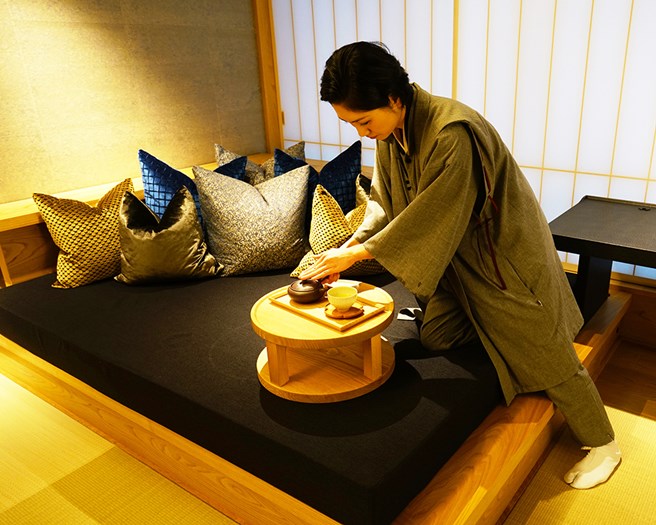
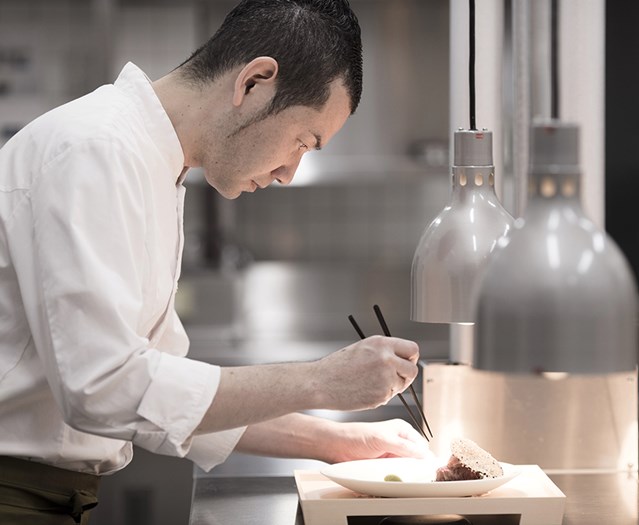
Left: Each floor has its own reception area. Right: Chef Hamada working in his kitchen.
“You’ve arrived in Japan at a good time because we are having Shichigosan,” says Asuka, referring to an event held annually in November when children aged 3, 5 and 7 are taken to temples and blessed in an ancient ceremony celebrating the rite of passage.
One of the biggest challenges Azuma and her team from Azuma Architect & Associates faced when it came to creating this modern ryokan tower was staying true to an authentic ryokan experience, which meant finding a natural hot spring in the heart of Japan’s magnificent capital.
“Before construction even began, they drilled 1,500 metres under the ground where HOSHINOYA Tokyo now stands and found a thermal hot spring in the seabed (Otemachi district is built on reclaimed land).
“That water is now pumped up to our 17th floor where our hot spring baths are located,” says Asuka. “Our hot spring is very different, though — it’s salty because it’s fed from a seabed hot spring.”
The hotel’s Otemachi Onsen Hot Spring is an oasis of relaxation in one of the world’s busiest cities. Guests, many of whom are business executives, soak in curative waters in rooms with open roofs — providing a magical experience under a glorious nighttime sky.
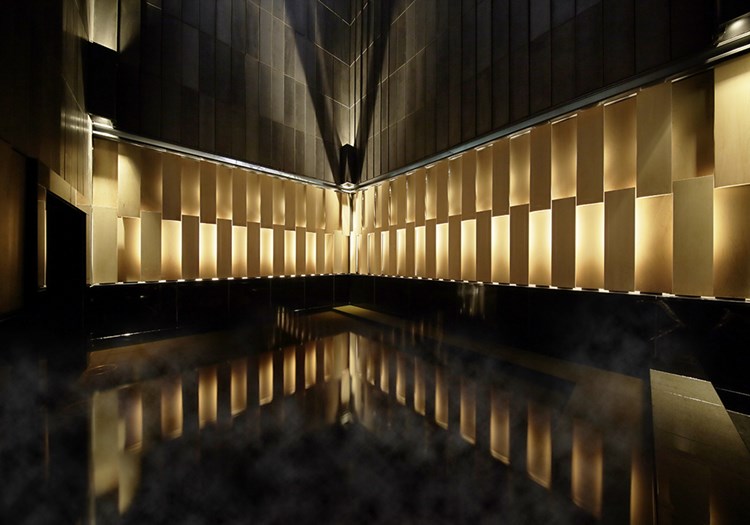
Above: The hotel's onsen spa is fed a hot springs below Tokyo's business district.
Just as relaxing is the hotel spa, manned by exceptional therapists like Naoyo Iwsaki, who administers massage treatments using traditional techniques meant to meet the health needs of guests.
Naoyo insists I perform a pre-massage workout which includes stretching and dips in the hot spring so “I can check the level of tension and pain in your body.”
The understated elegance of the treatment rooms — more soothing blonde woods and bamboo — get you into a relaxed frame of mind very quickly.
Morning breakfast can be enjoyed in the ochanoma with other guests or delivered to your room. Guests have two choices: a) complimentary rice ball and miso soup meal at the ochanoma lounge or b) a full in-room Japanese or Western breakfast.
In the hotel’s stylish lobby, guests are treated to traditional performances, which break out regularly.
Hoshino Resorts’ HOSHINOYA Tokyo is where Japan’s ancient and modern cultures co-exist in harmonious splendour.
Information
Rooms at HOSHINOYA Tokyo are always in great demand so we suggest you book well in advance of your arrival. Accommodation for this type of experience is never cheap — HOSHINOYA Tokyo rooms start around $800 (Cdn.) but the cultural experience is priceless. Go to hoshinoyatokyo.com/en/ for more information. / Air Canada offers direct daily service to Tokyo from several Canadian cities. / Tour East Holidays (www.toureast.com) offers many Japan tour option. / For tourist information on Japan, go to http//:www.ilovejapan.ca/